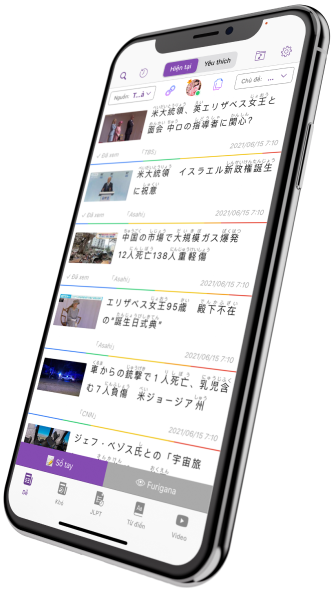
1. Introduction: What is Kanji and How It Differs from Other Writing Systems
Kanji is one of three elements used in the Japanese writing system. Kanji is a set of written characters that have been adopted from the Chinese writing system and are used together with the native Japanese: Hiragana and Katakana characters to write Japanese. Kanji differs from other Japanese writing systems in that it does not use an alphabet. Instead, each Japanese character represents a specific meaning or concept. This makes it more difficult to learn and remember than other Japanese writing systems. Additionally, Kanji characters can be combined to create new words or phrases with different meanings than the individual characters alone.
If you wanna have a high score in JLPT, Kanji is kind of necessary.
2. The Benefits Of Kanji With Hiragana
Kanji are borrowed from the Chinese and they’re more complex than Hiragana or Katakana. For example, you might know that the Japanese word for “water” is mizu. We can write that in Hiragana as みず. This is phonetic, as Hiragana sounds out the word:
み is “mi”
ず is “zu”
However, we can also write the same Japanese word in Kanji as 水. It’s still pronounced mizu, but now we can represent that entire idea in one single character instead of “spelling it out” in Hiragana with two separate characters. Sometimes, if you put two kanji together, they can make a new word based on their two individual parts. Did you know that 漢 (kan, or かん) means “Chinese”?
And the character ji (字, or じ) means, well, “character.”
What happens when you put them together? 漢字!
That’s right, it’s kanji (かんじ), which means “Chinese character”!
Remember, the Japanese borrowed Kanji from the Chinese, so of course it makes sense to call them “Chinese characters.”
Hiragana is a convenient way to “spell out” a word if you don’t know how to write its Kanji but do know how to say it.
However, using Kanji saves a lot of space, and if you learn to understand how Kanji is made, you may even be able to guess what some characters mean or how to say them, even if you’ve never seen them before! However, to do that, you have to know how kanji are set up, which is what we’ll look at next…
3. How to Learn Kanji Quickly and Effectively
Kanji is too difficult to remember, but today, TODAI Japanese wanna show you some tips & strategies for rapidly mastering this ancient writing system.
With these strategies in mind, you’ll be able to master Kanji in no time!
3.1. Start by learning the radicals
If you want to learn Japanese Kanji characters, start with the basics - there are 214 of them. It's best to familiarize yourself with the most commonly used Japanese characters first and then move on to more complex ones as your knowledge gradually expands.
3.2. Practice stroke order to help you memorize Kanji
One of the best ways to memorize Kanji - the most difficult Japanese writing system is to learn to write in Kanji.
Did you know that Kanji are written in a specific order, line by line?
This is called “stroke order,” and while it seems like it wouldn’t make much of a difference, it’s really important. When writing this Kanji, you would start with the topmost dot on the left. Then the second dot down, then the final stroke in the radical.
You can you TODAI Japanese to remember “stroker order” more easily.
3.3. Learn Jouyou Kanji - Japanese Children’s Material
With such an overwhelming selection of Kanji characters, it can be difficult to know which one to select. Fortunately, the solution is easy - focus on the Jouyou Kanji. This is a Japanese children’s material. These are around 50,000 characters that are commonly used and make learning a lot simpler.
(Jouyou is written as 常用漢字, which means, “commonly used Chinese characters.” Studying the Jouyou kanji provides a comprehensive understanding of the Japanese language. These are some of the most commonly used kanji characters and if you can learn all of them, you will be able to read up to 80% of any Japanese texts you come across. By putting them together, it is possible to guess what they mean.
That’s a big step to study Japanese!
3.4. Expand Your Jouyou Kanji With Other Words That Are Important To You
To further strengthen your mastery of Jouyou Kanji, try to incorporate Japanese words that are meaningful and applicable to you. This depends greatly on why you've decided to learn Japanese.
If you want to talk to a pen pal, try thinking about Japanese words you’ll use often: seasons, the weather, and what you do in your life. Or if you’re learning Japanese to read Japanese literature or manga, focus on the Japanese vocabulary that’s most relevant to the types of things you read.
Pick out Japanese words related to your day-to-day life and practice them in combination with Jouyou kanji. This way, you can better commit Japanese words to memory for long-term knowledge retention.
3.5. Use Spaced Repetition
I already mentioned how you can practice writing Kanji by learning stroke orders, but reading Kanji is another important skill to develop. One really easy way to do this is by using a smartphone app like TODAI Japanese, you can add some Kanji words that you don’t remember yet and use flashcards to practice that Japanese words before. What makes spaced repetition great is that it learns from you.
3.6. Read In Japanese As Much As Possible So You Can See Kanji In Context
Learning Kanji symbols are invaluable but to effectively use them in casual conversations, you need to see them used in the right context. This will help you understand their meaning and practice using them when necessary.!
“Practice makes perfect”
So you can try TODAI Japanese - this is a Japanese news application, you can practice your Japanese reading skills every day with a lot of the latest news.
The challenge here is finding interesting reading material that’s at the right level for you. You also can use the audio at the same time to practice your Japanese listening skills. Of course, you can know how to use Kanji in casual conversations.
I’ve also included Hiragana transcriptions of keywords in the text so that you have that aid as you work to improve your kanji knowledge!
I hope this can help you study Japanese better, so if you want to improve your Japanese more easily with so many exciting tips, follow TODAI Japanese and download the application TODAI Japanese below to achieve your goal.










Login to comment